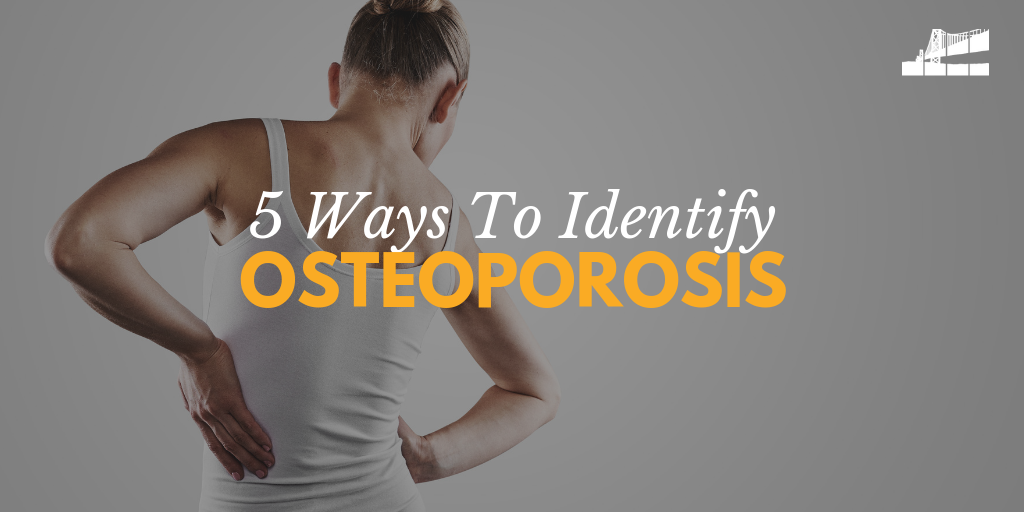Around the world, around one in three women and one in five men will experience a fracture caused by weak bones. The root of these dangerous fractures is osteoporosis—a disease that affects over 10 million Americans.
Oftentimes, osteoporosis is not diagnosed until a person sustains an injury like a fracture. Because of that, we’re helping you identify early signs of osteoporosis so you don’t have to wait until the worst happens to begin treating it.
What is osteoporosis?
Osteoporosis is defined as a loss of bone density or inadequate bone strength. The term osteoporosis literally translates to “porous bones”, a term that lends to the fact that osteoporosis is characterized by decreased bone strength and an increased susceptibility to fracturing your bones. Osteoporosis is considered a silent disease because one cannot usually feel their bones losing strength in a meaningful way.
Still, there are things you can look for that are often indicative of osteoporosis. Here are some tips for identifying osteoporosis.
1. Understand Signs of Osteoporosis
Though there are not always identifying osteoporosis symptoms, there are some signs to look for and some factors that may increase your risk of developing osteoporosis. Unfortunately for most, the most common early symptom is suffering a fracture as a result of a mild trauma. But there are other indications that you may be suffering from osteoporosis, such as:
· Bone density test that’s shows bone density below average
· Vitamin D deficiency
· Persistent joint or muscle aches
· Back aches
· Difficulty getting out of your chair or bed
These signs and symptoms aren’t always indicative or osteoporosis, so it’s important to visit your doctor regardless to rule out anything you could be suffering from.
2. Know Your Natural Risk Factors
One key piece of preventing osteoporosis is screening, especially when you fall into categories that put you at a higher natural risk of osteoporosis. Here is a list of people who should receive regular screenings for osteoporosis:
· Women older than 65
· Men older than 70
· Adults who have suffered fractures after age 50
· Family history of osteoporosis
· Adults with a health condition that would increase their risk of osteoporosis
· Adults taking medications that increase osteoporosis risk
· Some cancers
3. Determine Whether Your Lifestyle Factors are a Risk
Despite inherent risk factors, you can decrease your chances of developing osteoporosis by getting the right types of vitamins in your diet, including calcium and vitamin D, and getting exercise each day. There are also lifestyle habits you can change that can increase your risk such as smoking, excessive drinking, poor diet, or a sedentary lifestyle.
4. Treat Aches and Pains
By visiting a doctor’s office for those pesky muscle or joint aches, especially if you’re over the age of 60, your physician will be able to diagnose osteoporosis before it results in a more serious injury.
5. Pay Attention to Your Posture
If you find yourself hunching a bit more or feel as if you are decreasing in height over time, you could be experiencing a sign of osteoporosis. Let your doctor know so he or she can diagnose and begin treating you for osteoporosis, if necessary.
Osteoporosis Treatment
Treatment for osteoporosis may involve lifestyle changes combined with prescription medications. The type of treatment or medication will depend upon your age, overall health, preferences, and how much bone you’ve lost. Use these tips to begin diagnosing and treating osteoporosis before it results in a painful or debilitating injury.

